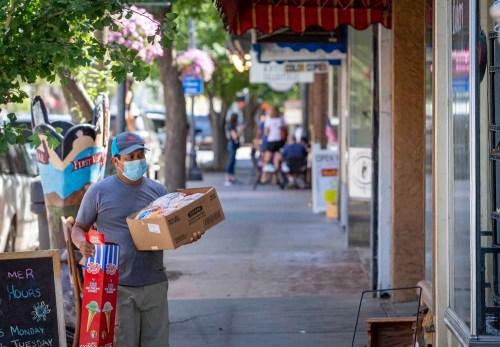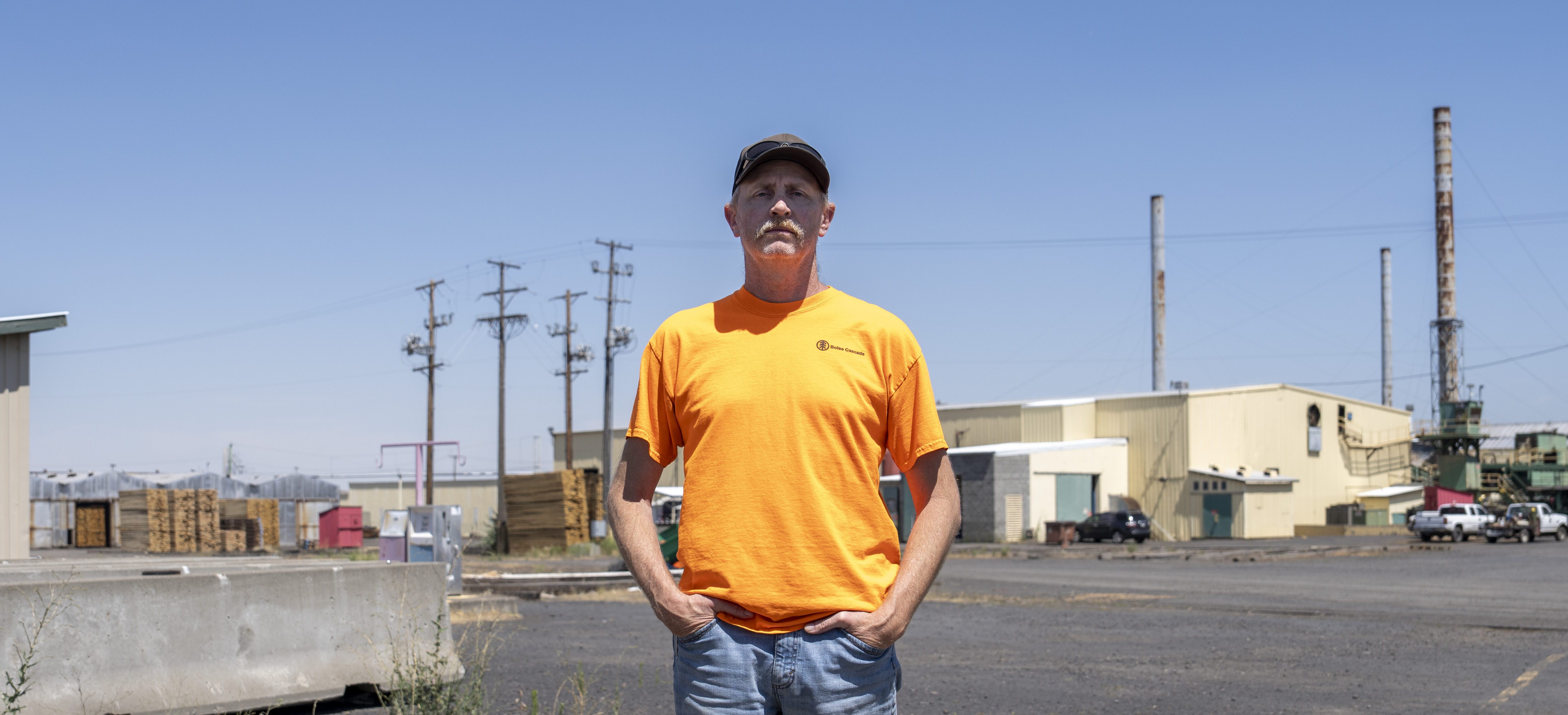Six months of COVID-19: Why Oregon is faring better than neighbors but could be ‘next Idaho, California or Washington’
Published 2:00 pm Tuesday, August 25, 2020

- A man wears a mask while passing through downtown Pendleton on July 15, 2020.
SALEM — Six months ago, the governor announced reality had finally hit Oregon: After months of the epidemic raging in China, the first person in the state had tested positive for COVID-19.
Since then, Oregon public health officials have reported more than 25,000 known cases and more than 400 coronavirus deaths, marking a grim and ongoing chapter in the state’s history.
Trending
But Oregon has fared far better than many others — ranking 45th lowest in the number of overall infections and 43rd lowest in the number of deaths per capita since the pandemic began.
Why?
Public health experts credit a mixture of geography, demographics, public health orders, the willingness of a substantial number of Oregonians to abide by them and even a bit of luck. The state was the seventh in the nation on Feb. 28 to announce its first case of COVID-19, and that might have helped shift Oregon into high gear earlier than many others.
“Overall, we have done really well,” said Dr. Renee Edwards, chief medical officer at Oregon Health & Science University. “An important piece is we had some time to prepare and in large measure we’ve treated this like a public health emergency.”
To be sure, Oregon is not Texas, Florida or Arizona — three of the states hit especially hard by the disease. Oregon also doesn’t have the international connections and population density of New York or New Jersey, where the virus flew in with travelers from Europe early in the pandemic and spread rampantly among the crowds, killing close to 50,000 in that region so far.
Conversely, Oregon has a lot more in common with sparsely populated places like Montana and Wyoming than neighboring states, which have all been hit much harder by the coronavirus.
Trending
Washington has seen 66% more per capita cases and two and a half times the rate of deaths than in Oregon.
Idaho has reported nearly triple the cases per capita and 60% more deaths per capita than in Oregon.
“Idaho is kind of on fire right now, from a case standpoint,” Pat Allen, director of the Oregon Health Authority, said earlier this month.
But Oregon is only performing well relative to the rest of the United States, which overall has floundered in its response. The country accounts for about 25% of cases and 22% of deaths in the world, but only about 4% of the world’s population.
Oregon, for example, has seen more cases and deaths than the entire country of South Korea, which is 12 times more populous.
So it comes as no surprise the pandemic still holds a tight grip over Oregon as well as the rest of the nation — shuttering schools and businesses, forcing millions into unemployment or to work from home, and altering nearly every other facet of daily life.
Roughly half of all fatalities have been linked to vulnerable Oregonians living in nursing homes and other long-term care facilities. Oregon’s Latino population, too, has been hit hard and now accounts for nearly 40% of the state’s known cases.
Some analysts, however, suspect the state’s overall case numbers and deaths might not be as high as in other parts of the country because Oregon is mostly white. One nationwide analysis found Latinos and African Americans are three times more likely to become infected and twice as likely to die as whites.
Experts caution there’s a long slog ahead — and there’s still much Oregon, let alone the country, can do to improve until there’s a widely accessible vaccine.
“This is really a fragile state of affairs,” said Carlos Crespo, director of Portland State University’s School of Community Health. “We can be the next Idaho, California or Washington.”
Early interventions
Oregon adopted several early interventions that appear to have helped slow the coronavirus, providing a leg up over other states.
Just over two weeks after Oregon identified its first coronavirus case, Gov. Kate Brown closed K-12 schools statewide March 16.
That placed Brown among the first wave of governors nationwide to shutter classrooms.
A study published in the Journal of the American Medical Association later found that states requiring every school to close saw a drop in new infections and deaths.
Later that month, Brown announced Oregon’s stay-home order — an aggressive move that made it more difficult for coronavirus to spread.
She took heat from local leaders, including Portland Mayor Ted Wheeler, for not acting sooner. But Brown implemented her March 23 order earlier than most others.
Before that, only four states — including California — had ordered residents to stay home, except for essential needs, and certain businesses to shut down.
Brown’s order came on the same day Washington Gov. Jay Inslee handed down a similar mandate. Washington’s order failed to have as much impact, despite that fact that Inslee lifted it more than two weeks after Brown lifted hers.
Some experts suspect that’s because COVID-19 had been circulating in Washington far longer, with the first case in the U.S. detected there Jan. 21. Seattle’s many international connections to Asia likely meant the virus was able to widely seed itself in the region before the true extent of the public health crisis was identified.
According to the National Institutes of Health, the timing of public health interventions is crucial. Each day that passes without them can dramatically change the trajectory of the disease because the coronavirus spreads exponentially.
Oregon’s eastern neighbor, meanwhile, issued its stay-home order two days after Brown, on March 25. Gov. Brad Little lifted that order May 1, two weeks before Brown.
Cases surged in both states a short while later. Brown issued a statewide mask order effective July 1. Little has shunned one — and he’s received praise for it.
Among Little’s supporters? Ammon Bundy, an Idaho resident who is best known for helping lead the 2016 occupation of the Malheur National Wildlife Refuge in Eastern Oregon.
Research shows masks make a difference. Data modelers at the University of Washington determined this month that if 95% of Americans start wearing masks whenever they go out, they’d prevent 66,000 people from becoming ill and ultimately dying coast-to-coast by December.
In Idaho, only 58% of Boise residents said they always wear masks when out in in public, according to a nationwide analysis published by The New York Times from July.
In Portland, it was roughly 75% to 85%.
“Idaho — being a more politically conservative state than Oregon — may have a much higher proportion of ‘pandemic deniers’ among its population,” speculated Chunhuei Chi, director of the Center for Global Health at Oregon State University.
“If people don’t believe there is a pandemic,” he added, “they will not take up any preventive measures.”
This article was originally published by the Oregonian/OregonLive, one of more than a dozen news organizations throughout the state sharing their coverage of the novel coronavirus outbreak to help inform Oregonians about this evolving heath issue.









